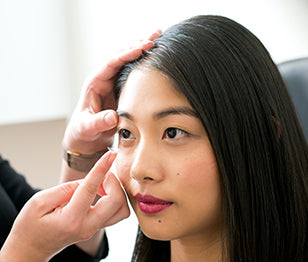A look into the future of contact lenses

Contact lenses are already pretty remarkable pieces of medical science. Tiny translucent pieces of plastic that change the way we see and experience our world.
Today we’re already seeing some impressive innovations in contact lens technology. Take ‘Digital Zone Optics’, as an example – which support eye health while the wearer is using digital devices. “Wearers say they feel less eyestrain and eye tiredness when using screens with these lenses, compared to other lenses,” says Bupa optometrist Karen Makin.
It’s just one of the ways contact lenses keep evolving. Let’s take a look at what’s new – and what’s coming next.
Transitions contact lenses
Transitions contact lenses – which adjust to sunlight and offer UV projection – have always appealed to people who spend lots of time outdoors and would rather not be taking sunglasses on and off all the time.
“Transitions contact lenses came out in America first, and we’ve probably had them in Australia for about a year,” says Makin. “It’s been a big innovation.”
Find out more about Transitions contact lenses.
Multifocal lenses
Contact lenses that offer both near and distance vision are relatively new – and there are still being improvements made to their design. But they’re already a game changer for people over 40.
“A lot of people would get to a certain age and we weren’t able to easily correct their vision anymore, because they needed multifocals”, says Makin. “Now they can continue wearing contact lenses into middle age and beyond”.
Find out more about multifocial contact lenses.
MiSight
One of the more exciting breakthroughs made recently is MiSight – a daily lens that’s built to slow the progression of myopia (or short-sightedness) in children.

Rates of myopia are on the rise as children spend more time in front of digital screens and less outdoors – where the natural sunlight can help healthy eye development.
Remember to get your child’s eyes checked if they’re squinting while reading or watching TV, holding objects close to their face, complaining of headaches or performing poorly at school. The younger you start correcting your little one’s vision, the better the outlook. And MiSight could be helping along the way.
Still to come
Exciting innovations currently under development include contact lenses embedded with medication that can release tiny amounts into the eye when needed, says Makin. Scientists in the US are even developing lenses that can release antihistamines into the eye for allergy relief. They’re just some of the new innovations happening for contact lenses – and there’s sure to be plenty more to come. So watch this space!

We're here to help
Speak to your optometrist if you have any questions about contact lenses or book a contact lens fit or refresh appointment today.
You might also like to read...
View all-
A little about Orthokeratology
Are you looking for a solution that doesn’t involve invasive procedures or surgery? Orthokeratology may be your answer…
Contact lenses guideA little about Orthokeratology
Are you looking for a solution that doesn’t involve invasive procedures or surgery? Orthokeratology may be your answer…
Read more -
Contact lenses 101: your need-to-know guide
How do teeny-tiny bits of plastic help you see better? Here’s an explainer on how contact lenses work.
Contact lenses guideContact lenses 101: your need-to-know guide
How do teeny-tiny bits of plastic help you see better? Here’s an explainer on how contact lenses work.
Read more -
Are contact lenses right for you?
Contact lenses are popular for a reason – they make life much easier for many people with vision issues. However, they might not be the right option for everyone.
Contact lenses guideAre contact lenses right for you?
Contact lenses are popular for a reason – they make life much easier for many people with vision issues. However, they might not be the right option for everyone.
Read more





